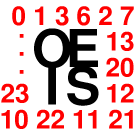What I refer to as “thick voluntarism,” it appears, is closely related to what economist Mike Munger refers to as “euvoluntary” transactions (h/t Arnold Kling). Munger is, among other things, a former Libertarian candidate for NC governor, so not surprisingly, the framing of euvoluntary is deferential to the rightist ideals of markets and property, and comes with ample disclaimers of ‘not that I’d want to make these things illegal or anything,’ or words to that effect. In Munger’s view, a transaction is euvoluntary if there are “no regrets,” while in my view, it is “thickly voluntary” if solvency is feasible. Munger’s stated (in this podcast (mp3)) intent is to build a bridge between philosophy and economics, so there is plenty of hair splitting. My intent is to build a bridge, if you will, between the formal idea of voluntary (which reads to me like the apologetics of exploitation) and the colloquial understanding of what voluntary means.
I also suspect that the difference between the merely voluntary and the euvoluntary may parallel the difference between restraints and constraints. Restraints are imposed by people, while constraints are those conditions exogenous to the human system, such as the laws of physics and perhaps the Iron Laws of Economics. But to many of us, for better or for worse, the difference is purely academic. The constraint-loaded life is not a very free life. There aren’t many real decisions. Everything defaults to the cheapest available everything; the low-rent district, etc. The constraint-loaded life really is lived in a smaller world, and I have a really hard time using the word “voluntary” to describe it.

Leave a Reply